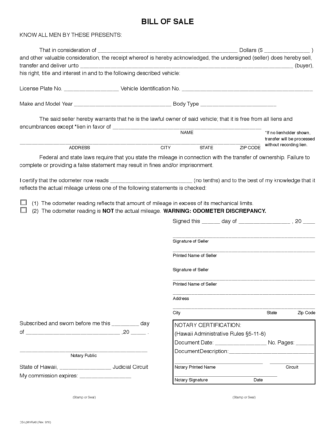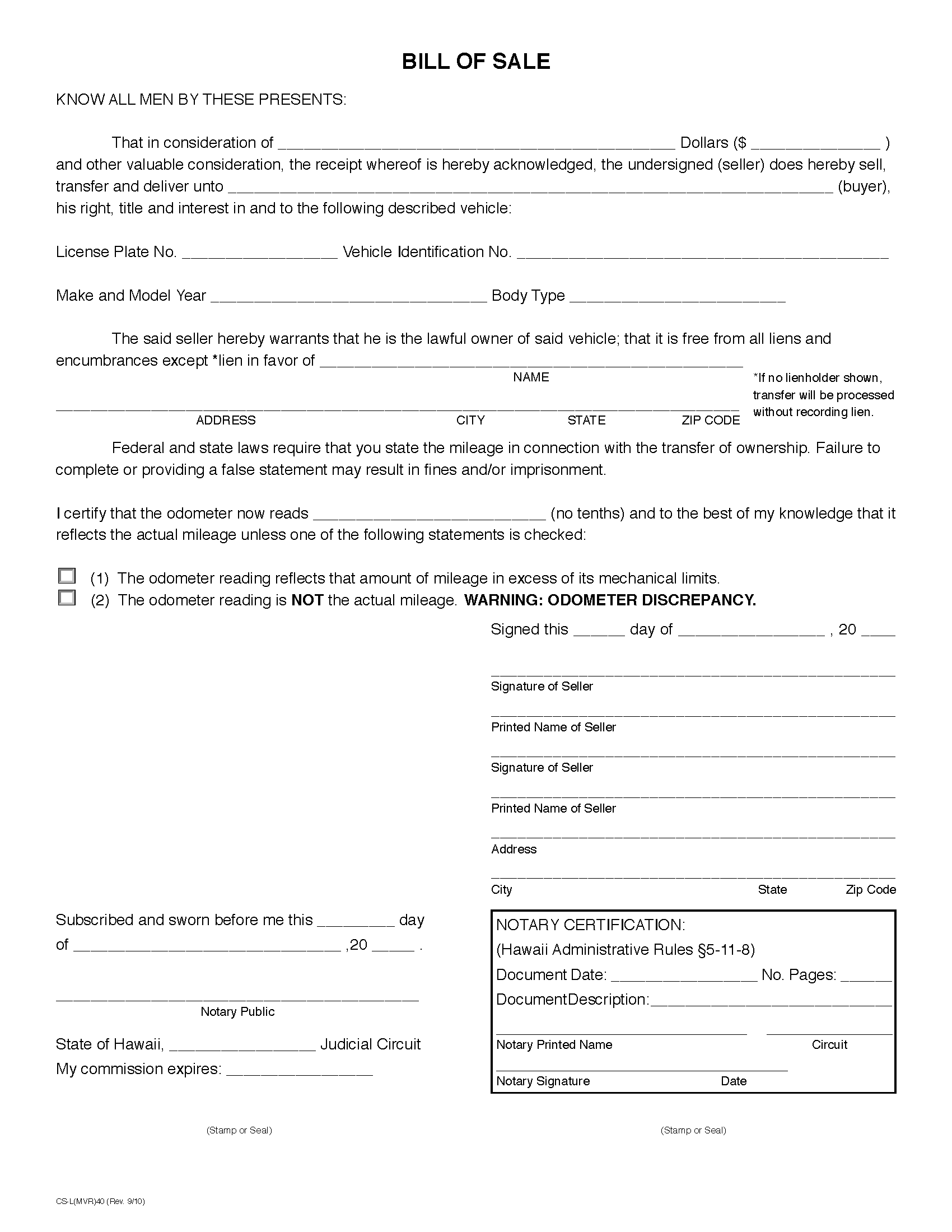Hawaii Vehicle Registration (3 Steps)Unlike most other states, Hawaii does not have a statewide DMV. Each county government handles its own vehicle registration, and local requirements may differ slightly. The following is ageneral guide based off of the Honolulu country registration process. New owners will need to register within the county in which they reside. 1. Gather DocumentsThe individual registering their vehicle must bring the following to their local motor vehicle registration office within 30 days of the transfer[1]:
Hawaii Motor Vehicle Power of Attorney – Allows an individual to designate a representative to act on their behalf during vehicle transactions. 2. Fill out the ApplicationDepending on the county, the application for vehicle registration will either be provided at the registration office or available to complete in advance (see Hawaii County). In all cases, the new owner must sign this and present the accompanying paperwork.
3. Pay Fees and SubmitAt the local registration office, the buyer will need to present their ID, pay the fees and taxes, and submit the paperwork. Information on each county can be found at:
|

